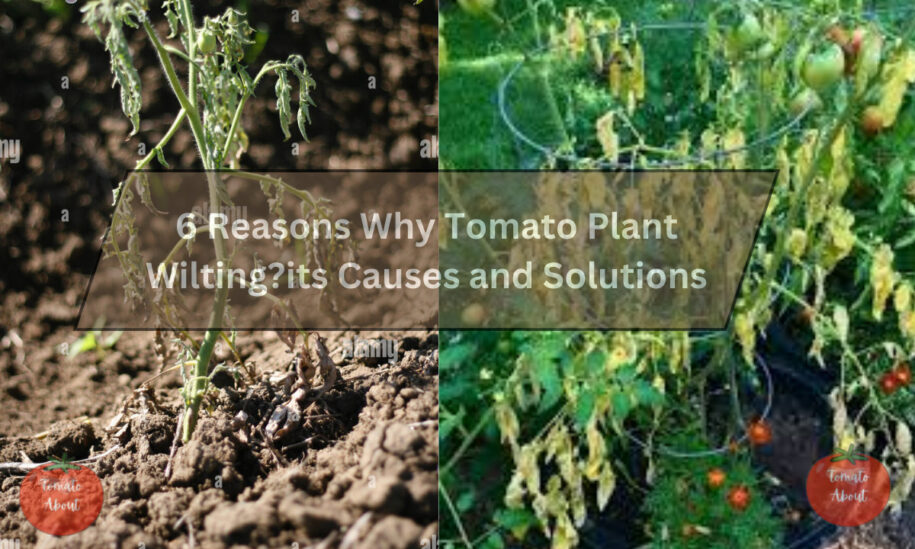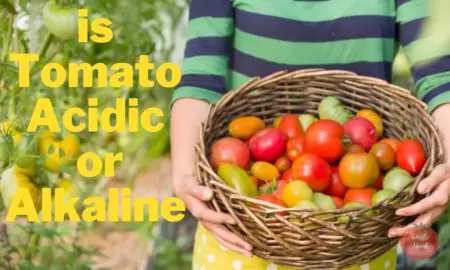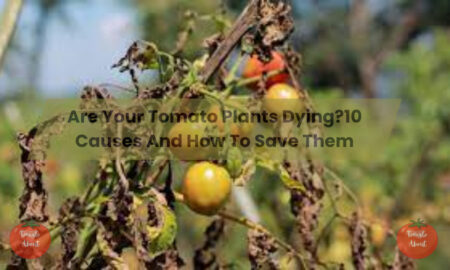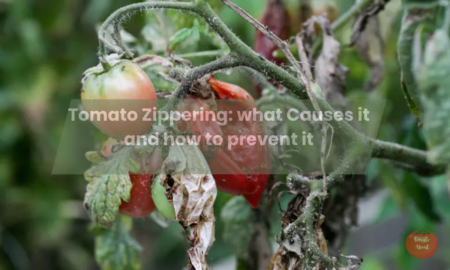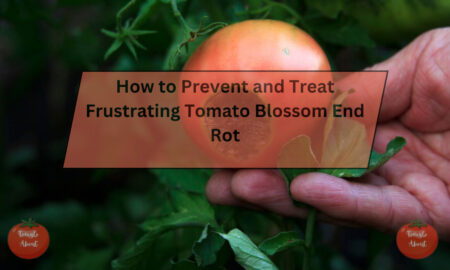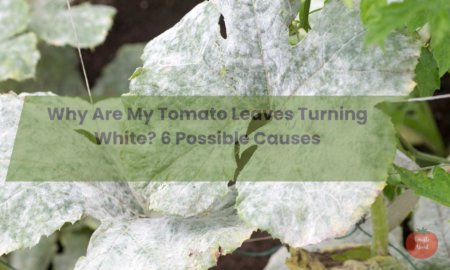As a passionate tomato grower, I know how disheartening it can be to see your beloved plants looking limp and wilted. The drooping, curled leaves are not only unsightly but indicate your tomatoes are undergoing stress. During my years cultivating tomatoes, I’ve seen my fair share of wilting and learned the common causes and cures.
In this guide, I’ll share the reasons tomato plants wilt and how to revive them so you can get your plants back to vigorous growth. Read on to diagnose what’s causing your tomatoes to wilt and the actions you can take to perk them up again.
1)Hot Weather
One frequent cause of tomato plant wilting that I see is hot temperatures. When an unexpected heat wave comes through with temperatures above 90°F, it often results in droopy, curled leaves on my tomatoes. (Learn about how heat affect tomato plant)
This is actually one of the ways the plant protects itself from excessive heat. By drooping its leaves downward, it reduces the surface area exposed to direct sunlight. This drops the overall plant temperature and minimizes water loss through the leaves.
So the wilting is essentially the tomato plant’s natural survival mechanism against heat stress. While the limp appearance can seem worrying, know that it’s the plant appropriately reacting to reduce damage from intense heat.
Solutions for Heat Stress
- The leaves should recover and perk back up once temperatures cool down in the evening. This daily wilting pattern is common and not harmful.
- For potted patio tomatoes, move the containers to a shady area during the hottest part of the day, usually from around 2-5 p.m. The shade will significantly reduce the amount of radiant energy being absorbed by the leaves.
- For in-ground garden tomatoes, install temporary shade cloths or drape lightweight row covers over the plants when temps exceed 85°F. This also creates a barrier against the intense afternoon sun.
- Mist the tomato plant leaves with cool, clean water using a spray bottle. This will directly lower the leaf temperature through evaporation much like human sweating. But do this judiciously as you don’t want to oversaturate the foliage.
- Ensure tomato plants are receiving adequate and consistent water, at least 1-2 inches per week. Hot weather causes more rapid moisture loss through transpiration. Adequate soil moisture will help plants withstand heat episodes.
- Mulch around the base of tomato plants to keep roots cooler and retain soil moisture longer. Organic mulches like straw or leaves work well.
2)Under Watering
Another frequent reason you may see tomato plants wilting is inadequate watering. Tomatoes need a steady supply of moisture, especially once fruits start developing.
If the soil dries out too much between waterings, the plants can’t absorb sufficient water through their roots. With inadequate moisture, the leaves will begin to droop, curl, and wilt in an effort to prevent excess transpiration and water loss.
It’s easy to identify wilting caused by under-watering – the leaves and entire plant will take on a shriveled, dried-out appearance. Older bottom leaves may be yellow or brown as well.
Solutions for Under Watering
- Give tomato plants a deep, thorough soaking right at the soil level when this occurs. Focus water at the base, not overhead.
- Within 1-2 hours after watering, you should see the wilted plant start to revive as water is transported to the leaves and tissues.
- Try to avoid allowing tomatoes to reach a severely wilted state. Consistently underwatering leads to flower drop and poor fruit quality.
- Check soil moisture daily by finger test and water when the top few inches become dry. Tomatoes prefer consistently moist soil.
- Apply mulch after watering to retain moisture longer. Organic options like wood chips or grass clippings work great.
- For container tomatoes, check soil moisture twice daily and water when even slightly dry. Their roots have limited soil to draw moisture from.
3)Hardening Off Issues
If you grow your tomato plants from seed indoors before transplanting outside, improperly hardening off the seedlings can result in wilting.
Tomato transplants need time to adjust to the harsher outdoor conditions. Going straight from a stable indoor environment to full sun, wind, and weather fluctuations will shock them. This stress manifests as severely wilted, curled foliage.
Solutions for Hardening Off Shock
- Gradually acclimate seedlings over 7-10 days to prevent transplant trauma. Start by placing them outdoors in filtered shade for 1-2 hours, then increase time over subsequent days.
- Only after 3-4 days of gradual exposure should you start leaving them in the morning sun for a few hours, building up to the afternoon sun.
- Allow 7-10 days total before transplanting into the garden, with plants spending full days outside at the end. This method avoids overwhelming the seedlings.
- The optimal time to begin hardening off is late spring when daytime temps are mild, under 80°F, and nighttime temps stay above 50°F.
- Check plants daily for wilting during hardening off. If leaves droop, provide more shade and wind protection until conditioned.
- Well-hardened off transplants will look compact and robust with rich green uncurled leaves upon transplant into the garden.
4)Root Pest Damage
While less obvious, wilting tomato plants can also be caused by soil pests damaging the roots. Wireworms, cutworms, nematodes, and other root-attacking bugs can chew on roots, restricting water uptake.
If your tomato leaves are wilting but you don’t see other symptoms, carefully dig up a plant and inspect the roots. Look for chew marks, scarring, lesions, Rotten or discolored roots, and the presence of worms around the base. Damaged roots are unable to take up adequate water.
Solutions for Root Pest Issues
- Eliminate root pests by drenching the soil with neem oil, which smothers bugs and larvae when watered around roots.
- For nematode infestations, apply chitin meal or beneficial nematodes to enrich soil with predators.
- Support damaged plants with stakes and consistent moisture until new healthy roots can regrow.
- Prevent pests by solarizing soil before planting and using row covers to exclude insects like cutworm moths.
- Rotate crops each year to interrupt pest life cycles in the soil.
- Attract and maintain populations of beneficial predatory insects like ground beetles that feed on soil pests.
5)Diseases Impacting Roots
Fungal wilts like fusarium and verticillium are common tomato diseases that cause wilting. These pathogens infect the plant’s vascular system, clogging and preventing proper water transport.

Initial symptoms include older leaves yellowing and drooping on just one side or branch. Leaves will quickly wilt across the entire plant without intervention. Cutting open stems reveals internal dark brown streaks or discoloration from the disease.
Solutions for Wilts
- Immediately remove and destroy any infected plants to prevent pathogen spread. Never compost diseased plants.
- Deeply till the surrounding soil to disrupt fungal resting structures. Solarize soil with black plastic to kill pathogens through heat exposure.
- Sterilize stakes, cages, and any garden tools with a bleach solution before reuse to destroy lingering spores.
- Test soil pH and improve drainage if too wet, as fusarium thrives in acidic, waterlogged conditions.
- Plant wilt-resistant tomato varieties labeled VFN or VFNT that carry resistance genes to the fungi.
- Water at the base of plants only and space plants appropriately to encourage airflow and avoid foliage moisture.
6)Blossom End Rot
While the name refers to a condition on the tomato fruit itself, blossom end rot (BER) can also cause wilting and curling of foliage.

This disorder is caused by inconsistent watering, leading to inadequate calcium delivery to developing tomatoes. Calcium is important for proper cell wall formation in fruits.
Plants suffering from BER will often have yellowing leaves starting from the bottom of the plant. Leaves may cup inward or develop necrotic brown spots.
Tomato fruits will have a leathery, sunken black rot on the bottom blossom end. The rot can cover nearly the entire fruit if severe.
Solutions for Blossom End Rot
- Maintain consistent soil moisture through mulching and avoiding drought stress. Uneven watering causes calcium deficiency in fruits.
- Apply calcium amendments such as crushed eggshells or bone meal. These provide readily available calcium to plants.
- Use calcium-rich fertilizers according to label directions to ensure adequate calcium nutrition.
- Remove damaged rotten fruits promptly so the plant can conserve energy for new fruit production rather than rotting tomatoes.
- Choose BER-resistant tomato varieties like Celebrity, Defiant, and Sweet Million. Some varieties are more prone to the disorder.
- Test soil pH and amend to 6.0-7.0 if needed. Tomatoes cannot uptake calcium effectively in overly acidic or alkaline conditions
Here is summary
| Problem | Symptoms | Solutions |
|---|---|---|
| Underwatering | Leaves droop during hot parts of day, and recover at night | Water thoroughly at soil level, mulch to retain moisture |
| Overwatering | Leaves limp and drooped, soil soggy | Allow soil to dry out before watering again |
| Heat Stress | Provide shade, mist leaves, and ensure adequate water | Leaves droop during hot parts of the day, and recover at night |
| Improper Hardening Off | Seedlings wilt after transplanting outside | Gradually acclimate plants to sun and wind over 7-10 days |
| Root Damage by Pests | Leaves wilt but no other obvious symptoms, chew marks on roots | Drench with neem oil, use cutworm collars, attract beneficial insects |
| Diseases like Fusarium Wilt | Leaves yellow and wilt on one side, stem browning | Remove and destroy infected plants immediately, sterilize tools |
| Blossom End Rot | Yellowing cupped leaves, black leathery spots on fruit | Consistent watering, mulch, calcium supplements |
How to Prevent Wilting in the First Place
Here are some tips to avoid wilted tomato plants:
- Mulch plants to maintain even soil moisture and reduce water stress.
- Use drip irrigation or soaker hoses to prevent wet foliage.
- Check soil moisture daily and water when dry 1-2 inches down.
- Provide afternoon shade if temperatures will exceed 85°F.
- Stake/trellis plants to improve air circulation and support fruit.
- Inspect weekly for pests like hornworms that can defoliate.
- Disinfect used cages/stakes to prevent disease carryover.
- Choose wilt-resistant cultivars labeled VFN or VFNT.
Will Wilted Tomato Plants Recover?
Whether or not your tomato plant recovers from wilting depends on the underlying cause. Since there are many potential factors leading to limp leaves, the prognosis varies.
In my experience, tomato plants wilted from environmental issues like inadequate water or heat stress often bounce back well. Simply adjusting the plant’s care and conditions allows it to revive once its needs are met. Wilting triggered by temporary underwatering or high temps is very common and the plants tend to perk up quickly when given a drink or cooler conditions.
However, severe wilting brought on by disease is less likely to recover. Conditions like fusarium wilt and verticillium wilt are difficult to reverse and the plant rarely improves once infected. The systemic nature of these diseases continues to spread through the plant’s vascular system even if you troubleshoot the wilting leaves. In these cases, it’s best to remove and discard affected plants promptly to avoid further wilting.
Basically, tomato plants wilted from temporary environmental factors generally recover well with a few tweaks to care. But wilt and leaf drooping caused by advanced diseases is less likely to bounce back and will often continue deteriorating. So consider the specific symptoms beyond just wilting to gauge if your plant stands a chance at revival.
Wrapping up!
If your tomato plant’s leaves start wilting, don’t panic. In most cases, the condition can be corrected with a few simple adjustments. Just be sure to identify the trigger factor right away before extensive damage occurs.
Catching problems early allows the plant to recover more quickly so it can get back to focusing its energy on producing fruit. While it’s discouraging to see limp foliage, have faith in your plant’s resilience. With proper troubleshooting and care, you can get those leaves perky again soon
Reference
Possible Causes of Sudden Wilt and Death in Tomatoes by Nebraska Extension

